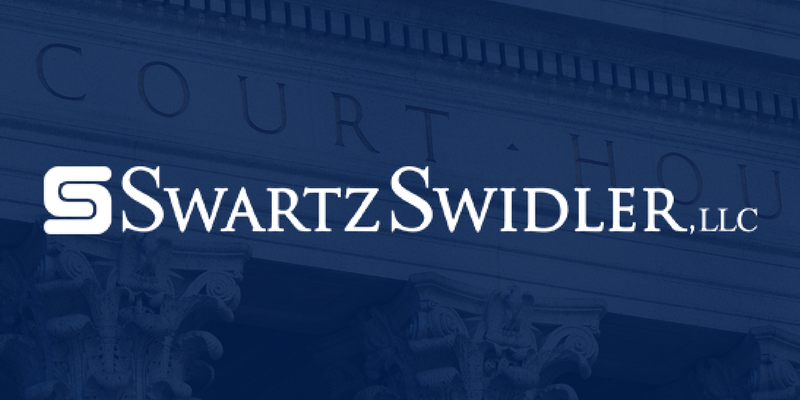Workplace harassment based on the protected characteristics of employees is illegal. Despite the laws prohibiting employment discrimination, it continues to occur in companies across the U.S. The most common type of illegal workplace harassment is sexual harassment. Employers with several employees are at risk of facing harassment claims if they do not have strong harassment policies and procedures in place. Employers with strong anti-harassment policies are less likely to face claims and are likelier to have healthier workplace environments in which all employees have the opportunity to succeed. Here is some information about what an anti-harassment policy should include from the employment lawyers at Swartz Swidler.
Strong, Clear Statement that Harassment Is not Tolerated
A good anti-harassment policy should include statements about both sexual and illegal non-sexual discrimination based on the protected characteristics of employees. It should start with a strong, clear statement that harassment will never be tolerated in the workplace and that the policy against harassment will be strictly enforced. This statement should be clear and simple so that employees at all levels clearly understand it. It should also include what will happen if the policy is violated, including an investigation and discipline, including potential termination.
Clear Definition of Prohibited Harassment
Next, a good policy should clearly define prohibited sexual and non-sexual harassment. Employers can use definitions from the Equal Employment Opportunity Commission and break them down to make them easier to understand. Do not simply copy the policy from the EEOC. Instead, you need to make it easy to understand by rewriting it and using examples.
Examples should be simple and written in plain English. They should give scenarios and explain why the behavior is inappropriate. Clearly mark the different examples and state that other types of conduct might also qualify as prohibited harassment.
Reporting Process
Companies should clearly define the steps employees should take to report workplace harassment. Employers should encourage employees to report sexual or non-sexual harassment without fear of reprisal. The reporting process should be clear and simple to follow. In many cases, the employee will first report harassment to his or her direct supervisor. However, in cases in which the supervisor is the harasser, the policy should provide a way for the employee to step outside the chain of supervision to report the conduct to someone else. Small companies can designate an outside party to receive complaints if necessary.
It is a good idea for employers to draft written report forms for employees to use. This can help those who are charged with investigating harassment complaints. A written report form also helps to document what was reported and when it occurred. Investigators should also be instructed to clearly document every investigative action they take in writing. Employers should train supervisors and human resources professionals about how to conduct investigations. Employers should always treat harassment complaints seriously and promptly investigate them.
During an investigation, people should be told that they should not talk about the investigation and that everything is only on a need-to-know basis. Witnesses to the harassment should be told not to share information about it with anyone else.
Prohibition Against Retaliation
An anti-harassment policy should also include clear bans of retaliation. Supervisors, managers, and others should understand that they cannot retaliate against an employee because he or she filed a harassment complaint. This remains true even if the complaint is determined to be groundless. Some complaints of harassment might not be harassment since people’s interpretations of the actions of others can be subjective. If someone retaliates against an employee for filing a harassment report, the person who engages in retaliatory conduct should be subject to discipline.
With that in mind, employers should also watch for people who file complaints maliciously with the intent to defame or harm someone else. These types of reports should not be tolerated. While it might be difficult for employers to distinguish between a harassment complaint made in good faith and one that is malicious, employers should still investigate to determine what has occurred and then take appropriate action afterward.
What Are the Goals of an Anti-Harassment Policy?
An anti-harassment policy serves a couple of purposes. An employer that has a policy can clearly communicate its prohibition against workplace harassment. This can help to set the tone for the workplace and readily communicate the employer’s expectations for workplace behavior. It also helps employees to understand that their concerns will be promptly addressed and that their employer has an objective standard for everyone to follow.
An anti-harassment policy that has a clear method of reporting also allows employers to properly investigate harassment claims and defend against any charges that might be filed with the Equal Employment Opportunity Commission. Finally, having a strong policy prohibiting illegal harassment at work can help to improve the working environment for all employees and boost morale. This can lead to happier, more productive employees and reduce turnover rates.
Talk to the Employment Lawyers at Swartz Swidler
While most companies have harassment policies, some are unclear and difficult to understand. Some employers also have written policies that they fail to follow or enforce. If you are the victim of illegal harassment at work based on your gender, race, color, religion, national origin, disability, pregnancy, or another protected characteristic, follow your company’s reporting procedure and file an internal complaint of harassment in writing. Keep a copy of your complaint and documentation of all of the incidents of harassment that have occurred.
If your employer fails to investigate your complaint, fails to take appropriate action to stop it, or retaliates against you for filing a complaint, you should reach out to an employment discrimination and harassment attorney at Swartz Swidler. We can review your documentation and your employer’s policy and help you to understand the next steps you can take. If you have grounds for pursuing a harassment charge with the EEOC, we can assist you with that process. Call us today at (856) 685-7420 to speak to us in confidence.








